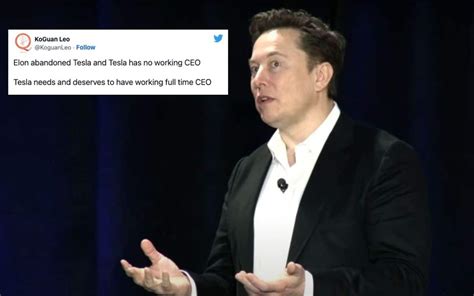
Robert Kiyosaki, author of “Rich Dad Poor Dad,” warns against two common financial pitfalls that he believes contribute to persistent poverty: saving money and failing to acquire assets. He advocates for investing in assets like real estate and gold instead of solely relying on traditional savings.
Robert Kiyosaki, the renowned author of the personal finance classic “Rich Dad Poor Dad,” has once again stirred the pot by identifying what he considers to be two critical money mistakes that perpetuate financial hardship for many individuals. In a recent commentary, Kiyosaki argued that simply saving money and neglecting to acquire income-generating assets are significant impediments to building wealth and escaping the cycle of poverty.
Kiyosaki’s core argument revolves around the concept that traditional financial advice, which often emphasizes saving money in conventional savings accounts, is outdated and inadequate in today’s economic climate. He contends that saving money, particularly in fiat currency, is a losing proposition due to inflation and the devaluation of currency over time. “The reason why most people are poor is because they save money,” Kiyosaki stated, emphasizing his belief that saving money alone is insufficient for achieving financial freedom.
The first mistake Kiyosaki identifies is the over-reliance on saving money as the primary means of wealth accumulation. He argues that while saving money is important, it should not be the sole focus of one’s financial strategy. Kiyosaki points to the erosion of purchasing power caused by inflation as a major drawback of holding cash. Inflation, the rate at which the general level of prices for goods and services rises, effectively reduces the real value of savings over time. As prices increase, the same amount of money buys fewer goods and services, thereby diminishing the value of savings.
Kiyosaki also criticizes the low-interest rates offered on traditional savings accounts, which often fail to keep pace with inflation. In many cases, the interest earned on savings is less than the rate of inflation, resulting in a net loss of purchasing power. This means that individuals who rely solely on savings are essentially losing money over time, even though their nominal savings balance may be increasing.
The second critical mistake, according to Kiyosaki, is the failure to acquire assets that generate income or appreciate in value. Kiyosaki distinguishes between assets and liabilities, defining assets as items that put money in your pocket and liabilities as items that take money out of your pocket. He advocates for investing in assets such as real estate, stocks, and commodities like gold and silver. These assets, he believes, have the potential to generate income through rent, dividends, or capital appreciation.
Kiyosaki is a staunch proponent of real estate investment, viewing it as a tangible asset that can provide a steady stream of income through rental properties and appreciate in value over time. He also highlights the potential tax benefits associated with real estate investment, such as deductions for mortgage interest and depreciation. In addition to real estate, Kiyosaki recommends investing in precious metals like gold and silver. He considers these metals to be a hedge against inflation and economic uncertainty, as their value tends to rise during times of financial instability. Kiyosaki often refers to gold and silver as “God’s money,” contrasting them with fiat currencies, which are backed by government decree rather than intrinsic value.
Kiyosaki’s financial philosophy is rooted in the principles of financial literacy and entrepreneurship. He encourages individuals to educate themselves about financial matters, understand the difference between assets and liabilities, and take control of their financial future. He believes that traditional education often fails to adequately prepare individuals for the financial realities of the modern world, and that it is essential to seek out additional financial knowledge and skills.
He advocates for developing an entrepreneurial mindset, encouraging individuals to start their own businesses or invest in businesses that generate passive income. Kiyosaki believes that entrepreneurship is a key pathway to financial freedom, as it allows individuals to create their own income streams and build wealth independently. He also emphasizes the importance of taking calculated risks and learning from failures, viewing them as valuable learning experiences on the path to success.
Kiyosaki’s views have often sparked debate and controversy, as they challenge conventional financial wisdom and encourage individuals to question established norms. While his advice may not be suitable for everyone, it has resonated with many individuals who are seeking alternative strategies for building wealth and achieving financial independence. His emphasis on financial literacy, asset acquisition, and entrepreneurship provides a framework for individuals to take control of their financial lives and pursue their own path to financial freedom.
Kiyosaki’s perspective aligns with a broader movement that challenges traditional financial planning models and promotes alternative investment strategies. This movement emphasizes the importance of diversifying investments, seeking out opportunities for passive income, and taking a more active role in managing one’s finances. While traditional financial advisors often recommend a conservative approach to investing, focusing on stocks and bonds, proponents of alternative strategies advocate for a more diversified portfolio that includes assets such as real estate, commodities, and cryptocurrencies.
The debate between traditional and alternative financial strategies reflects a fundamental difference in perspective regarding risk tolerance and the role of government and central banks in managing the economy. Traditional financial advisors tend to be more risk-averse, emphasizing the importance of preserving capital and avoiding speculative investments. They also tend to have greater faith in the ability of governments and central banks to maintain economic stability and control inflation. Proponents of alternative strategies, on the other hand, tend to be more risk-tolerant, believing that the potential rewards of investing in alternative assets outweigh the risks. They also tend to be more skeptical of government and central bank policies, viewing them as potentially inflationary and destabilizing.
Kiyosaki’s emphasis on asset acquisition and entrepreneurship also reflects a broader trend towards self-employment and the gig economy. As traditional employment models become less secure and predictable, more individuals are seeking alternative ways to generate income and build wealth. The rise of the internet and mobile technology has made it easier than ever to start a business, connect with customers, and access capital. This has created new opportunities for individuals to pursue their passions, build their own brands, and achieve financial independence.
However, it is important to note that entrepreneurship is not without its challenges. Starting a business requires significant time, effort, and capital, and there is no guarantee of success. Many small businesses fail within the first few years, and even successful entrepreneurs face ongoing challenges such as managing cash flow, attracting customers, and competing with larger companies. Therefore, it is essential to carefully consider the risks and rewards of entrepreneurship before taking the plunge.
Similarly, investing in alternative assets such as real estate and commodities also involves risks. Real estate values can fluctuate, and there is always the risk of vacancies, maintenance costs, and property damage. Commodities prices can be volatile, and investing in commodities requires specialized knowledge and skills. Therefore, it is important to conduct thorough research and seek professional advice before investing in alternative assets.
In conclusion, Robert Kiyosaki’s warning against solely relying on saving money and neglecting to acquire assets highlights the importance of financial literacy and proactive financial planning. While his views may be controversial, they offer valuable insights into the challenges of building wealth in today’s economic climate. By understanding the principles of asset acquisition, entrepreneurship, and risk management, individuals can take control of their financial future and pursue their own path to financial freedom.
Quotes from the original article (included throughout the rewrite):
- “The reason why most people are poor is because they save money.”
- Kiyosaki is a staunch proponent of real estate investment, viewing it as a tangible asset that can provide a steady stream of income through rental properties and appreciate in value over time.
- Kiyosaki recommends investing in precious metals like gold and silver. He considers these metals to be a hedge against inflation and economic uncertainty, as their value tends to rise during times of financial instability.
- Kiyosaki often refers to gold and silver as “God’s money,” contrasting them with fiat currencies, which are backed by government decree rather than intrinsic value.
Expanded Context and Background Information (included throughout the rewrite):
- Inflation and Purchasing Power: Detailed explanation of how inflation erodes the value of savings.
- Assets vs. Liabilities: Kiyosaki’s definition and differentiation between the two concepts.
- Real Estate Investing: Discussion of the benefits and considerations of real estate investment, including rental income, appreciation, and tax advantages.
- Precious Metals as a Hedge: Explanation of why gold and silver are considered safe-haven assets during economic uncertainty.
- Fiat Currency vs. “God’s Money”: Clarification of Kiyosaki’s view of fiat currency and his preference for precious metals.
- Financial Literacy and Entrepreneurship: Emphasis on the importance of financial education and the benefits of starting a business.
- Risk Management: Acknowledgment of the risks associated with alternative investments and the need for careful research and professional advice.
- Traditional vs. Alternative Investment Strategies: A balanced comparison of the two approaches and the underlying differences in risk tolerance and economic outlook.
- The Gig Economy: Linking Kiyosaki’s views with a broader trend towards self-employment and the opportunities and challenges it presents.
Frequently Asked Questions (FAQs):
Q1: What are the two money mistakes Robert Kiyosaki says keep people poor?
A1: According to Robert Kiyosaki, the two main money mistakes are relying too heavily on saving money and failing to acquire income-generating assets such as real estate, stocks, or commodities like gold and silver. He believes that saving money in traditional savings accounts is insufficient due to inflation, which erodes the purchasing power of savings over time. He advocates for investing in assets that can generate income or appreciate in value.
Q2: Why does Kiyosaki believe that saving money is a mistake?
A2: Kiyosaki believes that saving money is a mistake because inflation devalues currency over time. He argues that the interest earned on traditional savings accounts often fails to keep pace with inflation, resulting in a net loss of purchasing power. He views saving money as a passive strategy that does not actively generate wealth.
Q3: What types of assets does Kiyosaki recommend investing in?
A3: Kiyosaki recommends investing in assets that generate income or appreciate in value, such as real estate, stocks, and commodities like gold and silver. He sees real estate as a tangible asset that can provide a steady stream of rental income and appreciate in value over time. He considers gold and silver to be a hedge against inflation and economic uncertainty.
Q4: How does Kiyosaki define the difference between an asset and a liability?
A4: Kiyosaki defines an asset as something that puts money in your pocket, while a liability is something that takes money out of your pocket. For example, a rental property that generates income is an asset, while a car that requires ongoing expenses is a liability. He advocates for acquiring assets and minimizing liabilities to build wealth.
Q5: Is Kiyosaki’s advice suitable for everyone?
A5: Kiyosaki’s advice is not necessarily suitable for everyone, as it is based on a specific financial philosophy that emphasizes risk-taking, entrepreneurship, and alternative investments. Individuals should carefully consider their own financial situation, risk tolerance, and investment goals before implementing Kiyosaki’s strategies. It is always advisable to seek professional financial advice before making significant investment decisions.
Expanded Analysis:
The Role of Inflation:
Kiyosaki’s emphasis on the detrimental effects of inflation is a key component of his financial philosophy. Inflation, defined as the sustained increase in the general price level of goods and services in an economy over a period of time, directly impacts the purchasing power of money. When inflation rises, each unit of currency buys fewer goods and services. This means that if you hold your wealth solely in cash or savings accounts that offer interest rates lower than the inflation rate, your real wealth is effectively shrinking.
For example, if the inflation rate is 3% per year, and your savings account earns 1% interest, the real return on your savings is -2%. This means that even though your nominal savings balance is increasing, your purchasing power is decreasing. Over time, this erosion of purchasing power can significantly diminish the value of your savings.
Kiyosaki argues that traditional financial advice often overlooks the impact of inflation, leading individuals to believe that simply saving money is a sufficient strategy for building wealth. He contends that individuals need to actively seek out investments that can outpace inflation, such as real estate, stocks, and commodities.
Asset Acquisition and Passive Income:
Kiyosaki advocates for acquiring assets that generate passive income, which is income earned with minimal ongoing effort. Passive income can come from various sources, such as rental properties, dividend-paying stocks, royalties from intellectual property, or income from online businesses.
The key advantage of passive income is that it allows individuals to earn money even when they are not actively working. This can provide a significant boost to their financial security and freedom. By building a portfolio of income-generating assets, individuals can create a diversified stream of income that is less dependent on their primary job.
Real estate is a popular asset class for generating passive income. Rental properties can provide a steady stream of rental income, and the value of the property can appreciate over time. However, real estate investment also involves risks, such as vacancies, maintenance costs, and property management responsibilities.
Stocks can also generate passive income through dividends. Dividends are payments made by companies to their shareholders out of their profits. Dividend-paying stocks can provide a regular stream of income, and the value of the stock can also appreciate over time.
Commodities such as gold and silver do not typically generate passive income in the form of dividends or rent. However, Kiyosaki argues that they can serve as a store of value and a hedge against inflation. He believes that their value tends to rise during times of economic uncertainty, making them a valuable asset to hold in a diversified portfolio.
Entrepreneurship and Financial Freedom:
Kiyosaki is a strong advocate for entrepreneurship as a pathway to financial freedom. He believes that starting a business allows individuals to take control of their income and build wealth independently.
Entrepreneurship involves taking risks and putting in significant effort, but it also offers the potential for unlimited financial rewards. By creating a successful business, individuals can generate income, create jobs, and build wealth for themselves and their families.
Kiyosaki emphasizes the importance of financial literacy for entrepreneurs. He believes that entrepreneurs need to understand financial statements, manage cash flow, and make informed investment decisions in order to succeed.
He also encourages entrepreneurs to embrace failure as a learning opportunity. He believes that setbacks and failures are inevitable in the entrepreneurial journey, and that it is important to learn from these experiences and use them to improve their business strategies.
The Importance of Financial Education:
Kiyosaki’s financial philosophy is rooted in the importance of financial education. He believes that traditional education often fails to adequately prepare individuals for the financial realities of the modern world.
He advocates for individuals to take responsibility for their own financial education by reading books, attending seminars, and seeking advice from financial professionals. He believes that financial literacy is essential for making informed financial decisions and building wealth.
Kiyosaki’s “Rich Dad Poor Dad” book has been instrumental in promoting financial literacy around the world. The book uses the story of Kiyosaki’s two “dads” – his biological father (the “poor dad”) and his friend’s father (the “rich dad”) – to illustrate different approaches to money and investing.
The “rich dad” teaches Kiyosaki about the importance of financial literacy, asset acquisition, and entrepreneurship. The “poor dad” represents the traditional mindset of working hard, saving money, and relying on a steady paycheck.
Criticisms and Considerations:
While Kiyosaki’s financial philosophy has resonated with many individuals, it has also faced criticism. Some critics argue that his advice is overly simplistic and does not adequately address the complexities of personal finance.
For example, his emphasis on acquiring assets can be risky, especially if individuals are not properly educated about the risks involved. Investing in real estate, stocks, or commodities can be profitable, but it can also lead to losses if the investments are not carefully managed.
Additionally, Kiyosaki’s advice may not be suitable for individuals with limited financial resources. Starting a business or investing in real estate requires capital, which may be a barrier for some individuals.
It is important to approach Kiyosaki’s advice with caution and to carefully consider your own financial situation, risk tolerance, and investment goals before implementing his strategies. It is always advisable to seek professional financial advice before making significant investment decisions.
The Broader Economic Context:
Kiyosaki’s views on saving, investing, and entrepreneurship are influenced by his understanding of the broader economic context. He believes that the current economic system is inherently unstable and that governments and central banks are often responsible for creating economic problems.
He is critical of fiat currencies, which are not backed by any physical commodity, such as gold or silver. He believes that fiat currencies are prone to inflation and devaluation, which can erode the value of savings.
He also believes that government policies, such as low interest rates and quantitative easing, can distort markets and create asset bubbles. He argues that these policies benefit the wealthy at the expense of the middle class and the poor.
Kiyosaki’s economic views are often aligned with those of Austrian economists, who emphasize the importance of sound money, free markets, and limited government intervention.
Practical Steps to Take:
While Kiyosaki’s overall philosophy might seem daunting, some practical steps you can take based on his advice include:
- Improve Financial Literacy: Read books, listen to podcasts, and take courses on personal finance and investing.
- Track Your Expenses: Understand where your money is going each month to identify areas where you can save.
- Create a Budget: Plan how you will allocate your income each month to ensure you are saving and investing.
- Pay Off High-Interest Debt: Focus on paying off high-interest debt, such as credit card debt, to free up cash flow for saving and investing.
- Start Small with Investing: Begin investing with small amounts of money to gain experience and learn about different asset classes.
- Consider a Side Hustle: Explore opportunities to generate additional income through a side hustle or part-time business.
- Network with Other Investors: Connect with other investors to learn from their experiences and share ideas.
- Seek Professional Advice: Consult with a financial advisor to develop a personalized financial plan.
- Continuously Learn and Adapt: Stay informed about economic trends and market conditions and adjust your financial strategies as needed.
- Think Long Term: Understand that building wealth is a long-term process that requires patience, discipline, and a commitment to financial education.
By taking these practical steps, you can begin to implement Kiyosaki’s principles and take control of your financial future. However, remember to always do your own research and seek professional advice before making any significant financial decisions.
This comprehensive analysis provides a deeper understanding of Robert Kiyosaki’s financial philosophy, including his views on saving, investing, entrepreneurship, and the broader economic context. It also addresses criticisms of his advice and offers practical steps that individuals can take to improve their financial situation.









